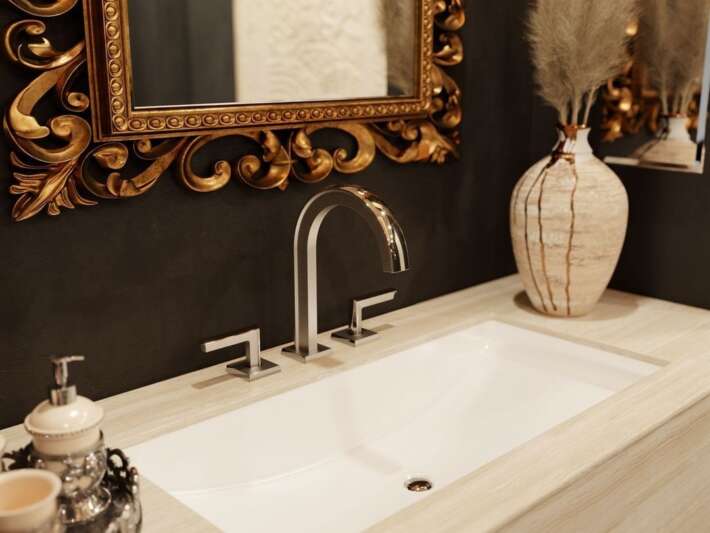Difference Between Cheap and Expensive Faucets
Views:394 classificationBlog classificationFaucet Knowledge

The faucet you choose for your kitchen or bathroom may seem like a minor detail, but it can make a significant impact on both the aesthetics and functionality of your space. When it comes to faucets, there’s a wide range of options available at different price points. Understanding the differences between cheap and expensive faucets can help you make an informed decision that meets your budget and performance expectations.
Material Quality:
-
- Cheap Faucets: Inexpensive faucets are often made from lower-quality materials such as plastic or lightweight metal alloys. These materials may not withstand the test of time and can be more prone to corrosion and wear.
- Expensive Faucets: Higher-end faucets are typically constructed from durable materials such as solid brass or stainless steel. These materials resist corrosion, provide longevity, and offer a more substantial feel.
Finish:
-
- Cheap Faucets: Budget-friendly faucets often feature a basic finish, such as chrome or painted surfaces. While these finishes can look decent initially, they may wear off over time, exposing the underlying material.
- Expensive Faucets: Premium faucets usually boast high-quality finishes like polished chrome, brushed nickel, or oil-rubbed bronze. These finishes are not only aesthetically pleasing but also resistant to tarnishing and scratching, maintaining their appearance for an extended period.
Design and Aesthetics:
-
- Cheap Faucets: Basic designs and generic styles are common in inexpensive faucets. While functional, they may lack the intricate details and elegant aesthetics found in higher-end models.
- Expensive Faucets: Luxury faucets often showcase unique and sophisticated designs. These can include intricate details, modern shapes, and innovative features that add a touch of class and style to your kitchen or bathroom.
Technology and Features:
-
- Cheap Faucets: Basic faucets usually come with standard features, such as a single handle for temperature control and a simple spout. Advanced technologies like touchless operation or temperature memory may be absent.
- Expensive Faucets: High-end faucets may incorporate advanced technologies like touchless sensors, temperature memory, and water-saving features. These technological advancements enhance convenience, efficiency, and the overall user experience.
Durability and Reliability:
-
- Cheap Faucets: Lower-priced faucets may have components that are more prone to leaks and other issues. The construction and assembly might not be as rigorous, leading to a shorter lifespan.
- Expensive Faucets: Premium faucets often undergo strict quality control measures during manufacturing. The precision engineering and attention to detail result in a more durable and reliable product that is less likely to develop leaks or other problems.
Warranty:
-
- Cheap Faucets: Inexpensive faucets may come with limited or no warranties. Manufacturers of budget-friendly options may not stand behind their products as firmly.
- Expensive Faucets: Higher-end faucets typically come with longer and more comprehensive warranties. This reflects the manufacturer’s confidence in the product’s durability and performance.
Conclusion
In conclusion, while cheap faucets may offer initial cost savings, investing in a more expensive faucet can provide long-term benefits in terms of durability, aesthetics, and advanced features. The decision ultimately depends on your budget, preferences, and how much importance you place on the aesthetics and functionality of your plumbing fixtures. Balancing quality and affordability is key to making a wise choice that aligns with your needs and expectations.
 WEWE Kitchen Faucets
WEWE Kitchen Faucets
您好!please sign in